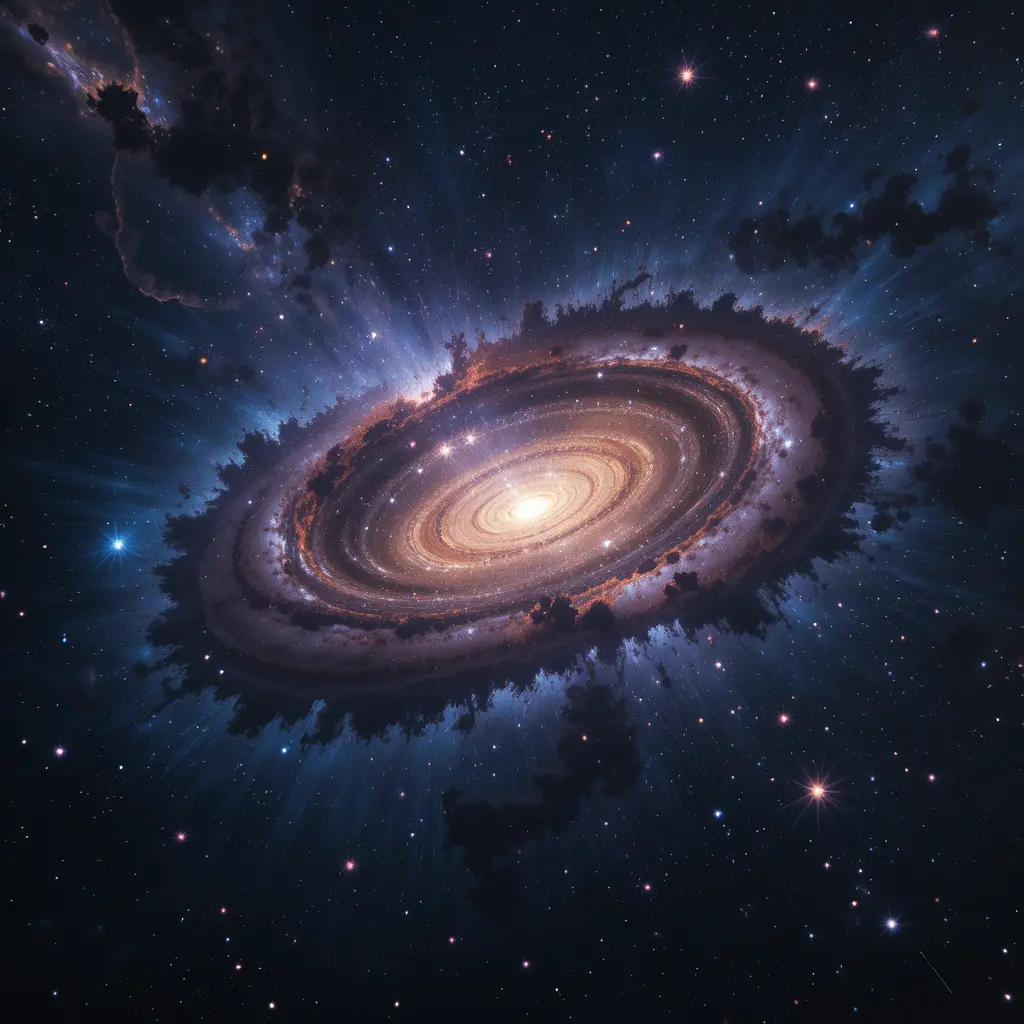Are we alone in the universe? This question has intrigued humanity for centuries. Scientists have made significant strides in exploring the possibility of life beyond Earth. With advanced technology, we now have the tools to search for signs of life on distant planets and moons. This article delves into what we currently know about extraterrestrial life and the exciting discoveries that fuel our quest for answers.
The History of Extraterrestrial Exploration
The quest to understand our universe and the possibility of life beyond Earth has fascinated humanity for centuries. From ancient civilizations gazing at the stars to modern-day scientists launching probes into the cosmos, the journey has been both thrilling and challenging. As an astrobiologist, I find this exploration not just a scientific endeavor but a deeply personal one.
Early Theories and Observations
In the early days, people looked to the skies and imagined other worlds. Ancient Greeks, for instance, speculated about the existence of life on other planets. Fast forward to the 17th century, when Galileo’s telescope revealed moons orbiting Jupiter, sparking curiosity about celestial bodies. These discoveries laid the groundwork for what we now call extraterrestrial exploration.
Modern Exploration Efforts
Today, our efforts have become more sophisticated. The launch of the Hubble Space Telescope and missions like Voyager have expanded our understanding of the universe. I remember the excitement when the Mars Rover sent back images of the Martian surface. It felt like a giant leap in the search for life beyond Earth. These missions are not just about finding life but understanding our place in the cosmos.
In my opinion, the most exciting part of this journey is the unknown. Each discovery, whether a new exoplanet or a hint of water on Mars, brings us closer to answering the age-old question: Are we alone? The search for life beyond Earth: What do we know? It’s a question that continues to drive our exploration and inspire future generations.
Technological Advances in Space Exploration
In the vast expanse of the universe, the quest to find life beyond our planet has always fascinated humanity. As an astrobiologist, I often ponder how far we’ve come in this journey. The search for life beyond Earth: What do we know? It’s a question that drives technological advances in space exploration, pushing the boundaries of what we once thought possible.
Revolutionary Technologies
Space exploration has seen remarkable technological leaps. Consider the Mars rovers, for instance. These robotic explorers, like Curiosity and Perseverance, are equipped with advanced tools that analyze soil and rock samples, searching for signs of past life. It’s like sending a detective to a crime scene millions of miles away. The precision and autonomy of these machines are astounding, and they represent just a fraction of our capabilities.
Another exciting development is the James Webb Space Telescope. This marvel of engineering allows us to peer deeper into the cosmos than ever before. With its powerful lenses, it can detect the faintest signals from distant planets, potentially identifying atmospheres that could support life. I remember the first time I saw images from the Hubble Telescope; it was like opening a window to a new world. The James Webb promises to expand that view even further.
Personal Reflections and Future Prospects
Reflecting on these advancements, I feel a mix of excitement and humility. The search for life beyond Earth: What do we know? We know that our technology is evolving rapidly, yet the universe remains a vast mystery. I recall a conversation with a fellow scientist who likened our efforts to finding a needle in a cosmic haystack. Yet, with each technological stride, that needle becomes a little less elusive.
As we continue to innovate, I am hopeful. The potential for discovery is immense, and the implications for humanity are profound. Who knows what we might find? Perhaps, one day, we’ll answer the age-old question of whether we are alone in the universe. Until then, our journey continues, fueled by curiosity and the relentless pursuit of knowledge.
Current Missions and Discoveries
In the vast expanse of the universe, the quest to find life beyond Earth is both thrilling and daunting. As an astrobiologist, I often find myself pondering the mysteries of the cosmos, much like a child gazing at the stars for the first time. The search for life beyond Earth: what do we know? Well, current missions and discoveries are shedding light on this age-old question.
Exploring Mars and Beyond
NASA’s Perseverance rover is a prime example of our efforts to explore Mars. Equipped with advanced tools, it seeks signs of ancient life, much like a detective searching for clues at a crime scene. The rover’s discoveries could be pivotal in understanding whether life ever existed on the Red Planet. I remember the excitement in the lab when we first received images from Perseverance. It felt like opening a time capsule from another world.
Europa and Enceladus: Oceans of Possibility
Beyond Mars, moons like Europa and Enceladus captivate scientists. These icy bodies, with their subsurface oceans, are intriguing. They remind me of Earth’s own deep-sea vents, where life thrives in the most unexpected places. The potential for life in these alien oceans is a tantalizing prospect. As we continue the search for life beyond Earth, what do we know? We know that the universe is full of surprises, and each mission brings us closer to answering the ultimate question: Are we alone?
The Role of Astrobiology
Astrobiology is a fascinating field that plays a crucial role in The Search for Life Beyond Earth: What Do We Know? It combines elements of biology, chemistry, and astronomy to explore the possibilities of life existing elsewhere in the universe. As an astrobiologist, I often find myself pondering the vastness of space and the potential for discovering new forms of life.
Understanding Astrobiology
Astrobiology seeks to answer fundamental questions about life in the universe. It examines how life began on Earth and uses this knowledge to predict where life might exist beyond our planet. For instance, the study of extremophiles—organisms that thrive in extreme conditions on Earth—provides insights into how life might survive on other planets. I remember visiting Yellowstone National Park and observing bacteria living in boiling hot springs. This experience made me realize that life can adapt to seemingly inhospitable environments, which fuels my optimism about finding life elsewhere.
The Impact of Astrobiology on Space Exploration
Astrobiology significantly influences space missions. It guides the selection of landing sites on Mars and the moons of Jupiter and Saturn, where conditions might support life. The recent discovery of potential water plumes on Europa, one of Jupiter’s moons, has astrobiologists excited. Water is a key ingredient for life, and its presence increases the chances of finding living organisms. Personally, I believe that astrobiology will lead us to groundbreaking discoveries that could change our understanding of life itself.
Challenges and Future Prospects
The search for life beyond Earth is a thrilling journey filled with both challenges and exciting prospects. As an astrobiologist, I often find myself pondering the vastness of the universe and the potential for discovering new forms of life. This quest is not just about finding extraterrestrial beings; it’s about understanding our place in the cosmos.
Challenges in the Search
One of the biggest challenges we face is the sheer distance between celestial bodies. Imagine trying to find a needle in a haystack, but the haystack is the size of the universe. The vastness of space makes it difficult to pinpoint where life might exist. Additionally, the harsh conditions of space, such as extreme temperatures and radiation, pose significant obstacles to exploration. I remember a colleague once comparing it to searching for a friend in a city where you don’t speak the language or know the streets. It’s daunting, but not impossible.
Future Prospects
Despite these challenges, the future holds promising prospects. Advances in technology, like the development of more powerful telescopes and space probes, are enhancing our ability to explore distant planets and moons. For instance, the James Webb Space Telescope is expected to provide unprecedented insights into the atmospheres of exoplanets, potentially revealing signs of life. Personally, I am optimistic about the potential discoveries that await us. The search for life beyond Earth: what do we know? We know that with each technological leap, we get closer to answering this profound question. The journey is as important as the destination, and every step forward brings us closer to understanding the universe and our place within it.






